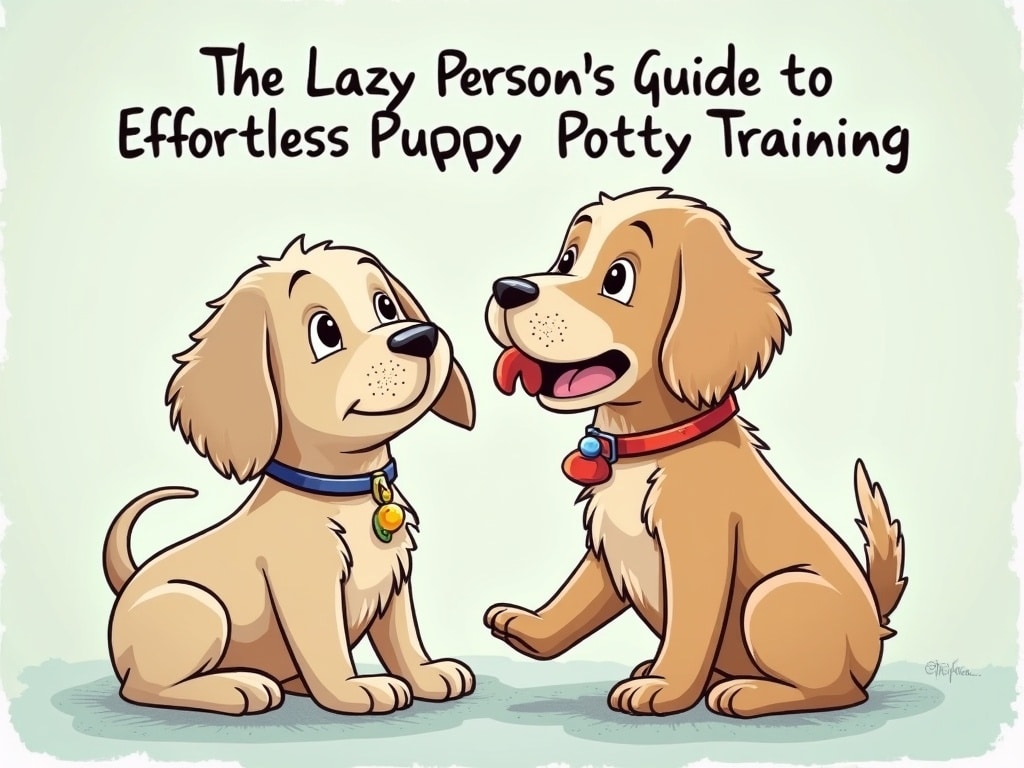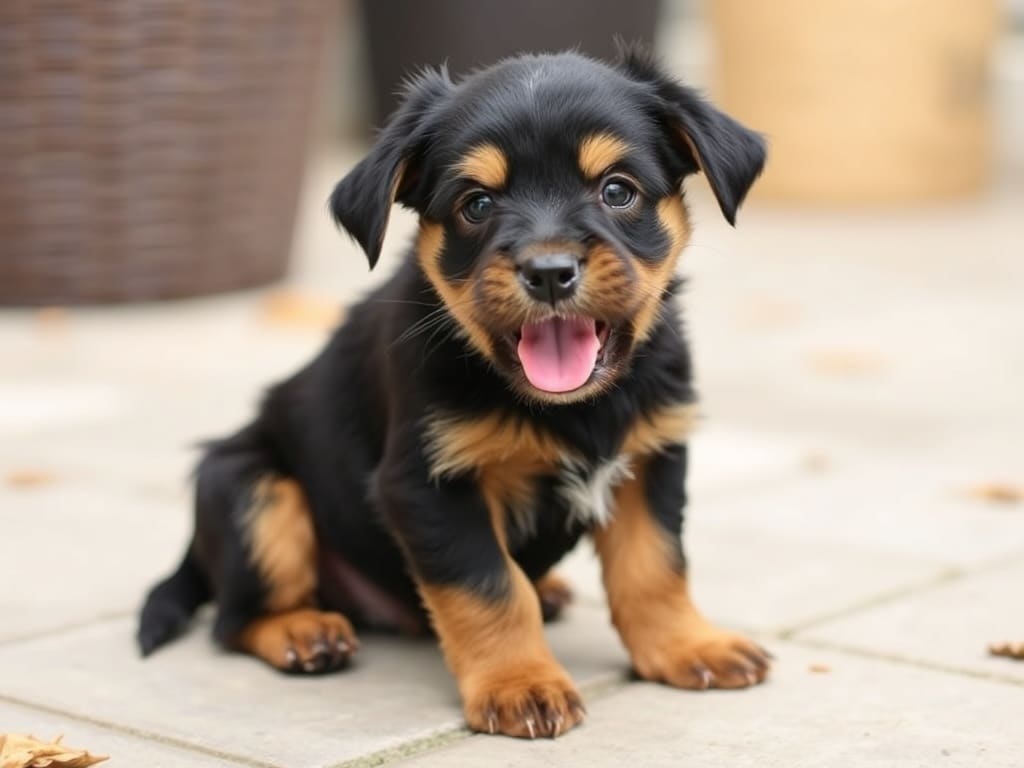The Lazy Person’s Guide to Effortless Puppy Potty Training
Forget the old-school, drill-sergeant tactics. This guide embraces a modern, positive, and, most importantly, realistic approach to teaching your puppy where to do their business. We’re talking fewer accidents, less frustration, and a happier, more confident pup. So, ditch the overwhelm and embrace the lazy way to potty training – your sanity (and your carpets) will thank you for it.
What is Lazy Potty Training and Why is it Effective?
The term lazy might be misleading. It’s not about neglecting your pup or shirking responsibility. Instead, it’s about working smarter, not harder. Lazy potty training focuses on setting up a structured environment, consistent routines, and positive reinforcement to make potty training as intuitive and stress-free as possible. Here’s why it works:
- Preventative, not reactive: Instead of constantly cleaning up accidents, we focus on preventing them from happening in the first place.
- Consistency is key: Establishing a predictable schedule helps your puppy develop healthy habits and understand what’s expected of them.
- Positive reinforcement: Reward desirable behavior with praise and treats, motivating your puppy to repeat the action.
- Reduced stress: A structured approach minimizes confusion and anxiety for both you and your puppy.
- Built on understanding puppy behavior: this technique incorporates the best in breed behavior that makes puppy training easy.
In essence, lazy potty training embraces efficiency, understanding that a little preparation and consistency can go a long way in achieving potty training success.
Preparing Your Home for Lazy Potty Training Success
Before you bring your puppy home, take some time to pup-proof your space. This is about more than just hiding valuables; it’s about creating a safe and predictable environment that supports successful potty training.
- Limit access: Confine your puppy to a smaller, easily supervised area, especially when you can’t actively watch them. This could be a puppy-proofed room, a playpen, or a crate.
- Remove temptations: Pick up anything your puppy might be tempted to chew on, including shoes, electrical cords, and small objects.
- Clean thoroughly: If previous pets have had accidents in your home, clean those areas thoroughly with an enzymatic cleaner to eliminate odors that might attract your puppy.
- Designate a potty spot: Decide where you want your puppy to do their business and make it easily accessible.
By creating a structured and safe environment, you’re setting your puppy up for success from day one. This proactive approach significantly reduces the likelihood of accidents and makes the entire potty training process much smoother. Make sure your puppy have [Beyond the Bowl: Expert Nutrition Tips for a Thriving Puppy]
Choosing the Right Potty Spot: Indoors vs. Outdoors
Deciding where your puppy will relieve themselves is a crucial first step. Both indoor and outdoor options have their pros and cons, and the best choice depends on your lifestyle, living situation, and climate.
Outdoor Potty Spot
- Pros: Natural, hygienic, teaches your puppy to eliminate outside.
- Cons: Weather dependent, requires consistent outdoor access, may need to be cleaned of parasites or other dogs waste.
Indoor Potty Spot (Puppy Pads)
- Pros: Convenient for apartment living or inclement weather, good for small breeds.
- Cons: Can be confusing for puppies, may delay outdoor training, can be messy.
Regardless of your choice, consistency is key. Once you’ve selected a potty spot, always take your puppy to the same location. The familiar smells will help them understand what’s expected of them. If you’re using puppy pads, place them strategically in the designated area and gradually move them closer to the door as your puppy progresses.
Establishing a Consistent Potty Schedule
Puppies have small bladders and need to relieve themselves frequently. Establishing a consistent potty schedule is essential for preventing accidents and teaching your puppy bladder control. Here’s a general guideline:
- First thing in the morning: Take your puppy out immediately after they wake up.
- After meals: Puppies typically need to eliminate within 15-30 minutes after eating.
- After naps: Another prime potty time.
- After playtime: Excitement often leads to the urge to go.
- Before bedtime: A final potty break before settling in for the night.
As a general rule, a puppy can hold their bladder for approximately one hour for every month of age (e.g., a 3-month-old puppy can hold it for about 3 hours). However, this is just a guideline, and individual puppies may vary. Pay attention to your puppy’s cues, such as circling, sniffing, or squatting, and take them out immediately.
The Importance of Positive Reinforcement and Reward Systems
Positive reinforcement is the cornerstone of effective potty training. When your puppy eliminates in the designated spot, immediately praise them enthusiastically and offer a small, tasty treat. This creates a positive association with the act of going potty in the right place.
Here are some tips for using positive reinforcement effectively:
- Timing is crucial: Reward your puppy within seconds of them finishing going potty.
- Use a specific praise phrase: Choose a phrase like Good potty! or Yes! and use it consistently.
- Vary the rewards: Use different types of treats to keep your puppy motivated.
- Be enthusiastic: Your puppy will respond to your excitement and positive energy.
- Fade the treats gradually: Once your puppy is consistently going potty in the right place, gradually reduce the frequency of treats, replacing them with praise.
Remember, potty training should be a positive experience for both you and your puppy. Avoid punishment or scolding, as this can create fear and anxiety, making potty training more difficult.

Dealing with Accidents: How to Clean Up and Avoid Punishment
Accidents are inevitable, especially during the early stages of potty training. The key is to handle them calmly and effectively. Here’s what to do when your puppy has an accident:
- Interrupt them (if you catch them in the act): If you catch your puppy in the middle of an accident, calmly interrupt them with a gentle Uh-oh! or No!
- Immediately take them outside: Even if they’ve already started going, take them to their designated potty spot and encourage them to finish.
- Praise and reward them if they finish outside: If they finish going potty outside, praise them enthusiastically and offer a treat.
- Clean up the accident thoroughly: Use an enzymatic cleaner to eliminate odors that might attract your puppy back to the same spot.
Never punish your puppy for having an accident. Punishment can create fear and anxiety, making your puppy less likely to go potty in front of you, even in the designated spot. Instead, focus on preventing accidents by sticking to a consistent schedule and supervising your puppy closely.
Crate Training as a Potty Training Aid
Crate training can be a valuable tool for potty training. Dogs naturally avoid soiling their sleeping area, so a crate can help teach your puppy to hold their bladder. Here are some tips for using crate training to aid potty training:
- Introduce the crate gradually: Make the crate a positive and comfortable space by feeding your puppy meals inside and providing them with toys.
- Never use the crate as punishment: The crate should be a safe and secure haven for your puppy.
- Take your puppy out immediately after they come out of the crate: This is a prime potty time.
- Choose the right size crate: The crate should be just big enough for your puppy to stand up, turn around, and lie down comfortably.
- Don’t leave your puppy in the crate for too long: Puppies can’t hold their bladders for extended periods.
Crate training can be a highly effective potty training aid when used correctly. It helps teach your puppy bladder control and provides them with a safe and secure space.
Using Puppy Pads Effectively (If Necessary)
While outdoor potty training is generally preferred, puppy pads can be a useful tool in certain situations, such as apartment living or inclement weather. Here’s how to use puppy pads effectively:
- Place the puppy pad in the designated potty area: Choose a consistent location and always place the pad in the same spot.
- Take your puppy to the pad frequently: Follow the same schedule as you would for outdoor potty training.
- Reward your puppy for using the pad: Praise them enthusiastically and offer a treat when they eliminate on the pad.
- Gradually move the pad closer to the door: If your ultimate goal is outdoor potty training, slowly move the pad closer to the door, eventually placing it outside.
- Clean up accidents immediately: Use an enzymatic cleaner to eliminate odors.
Puppy pads can be a convenient solution for some dog owners, but it’s important to use them strategically and consistently. If your goal is outdoor potty training, use puppy pads as a temporary aid rather than a long-term solution.
Troubleshooting Common Potty Training Problems
Even with the best efforts, potty training can sometimes be challenging. Here are some common problems and how to address them:
- Puppy is having accidents in the same spot: Clean the area thoroughly with an enzymatic cleaner to eliminate odors.
- Puppy is only going potty when you’re not watching: Supervise your puppy more closely and take them out frequently.
- Puppy is regressing in potty training: Rule out any medical issues with your veterinarian. If it’s behavioral, go back to basics and reinforce the potty training schedule.
- Puppy is afraid to go potty outside: Make the outdoor potty spot a positive and comfortable place. Offer praise and treats, and avoid forcing your puppy to go.
Don’t get discouraged if you encounter setbacks. Potty training takes time and patience. Stay consistent, positive, and proactive, and your puppy will eventually learn the ropes.
When to Seek Professional Help from a Trainer or Veterinarian
In some cases, potty training problems may require professional intervention. Here’s when to consider seeking help from a trainer or veterinarian:
- Medical issues: If your puppy is suddenly having accidents or experiencing other symptoms, such as straining to urinate or blood in the urine, consult your veterinarian to rule out any underlying medical conditions.
- Behavioral issues: If your puppy is exhibiting anxiety, fear, or aggression related to potty training, a certified professional dog trainer can help you address these issues.
- Lack of progress: If you’ve been consistently following a potty training schedule for several weeks and are still not seeing progress, a trainer or veterinarian can provide additional guidance and support.
Don’t hesitate to seek professional help if you’re struggling with potty training. A trainer or veterinarian can provide valuable insights and help you develop a personalized plan to address your puppy’s specific needs.
Conclusion: Embrace the Lazy, Enjoy the Results
Potty training doesn’t have to be a battle of wills or a constant source of stress. By embracing the principles of lazy potty training – a consistent schedule, positive reinforcement, and a proactive approach – you can navigate this crucial phase with less effort and more success. Remember, patience and consistency are your best allies. So, take a deep breath, relax, and enjoy the journey of helping your puppy become a well-trained member of your family. Your carpets (and your sanity) will thank you for it!

